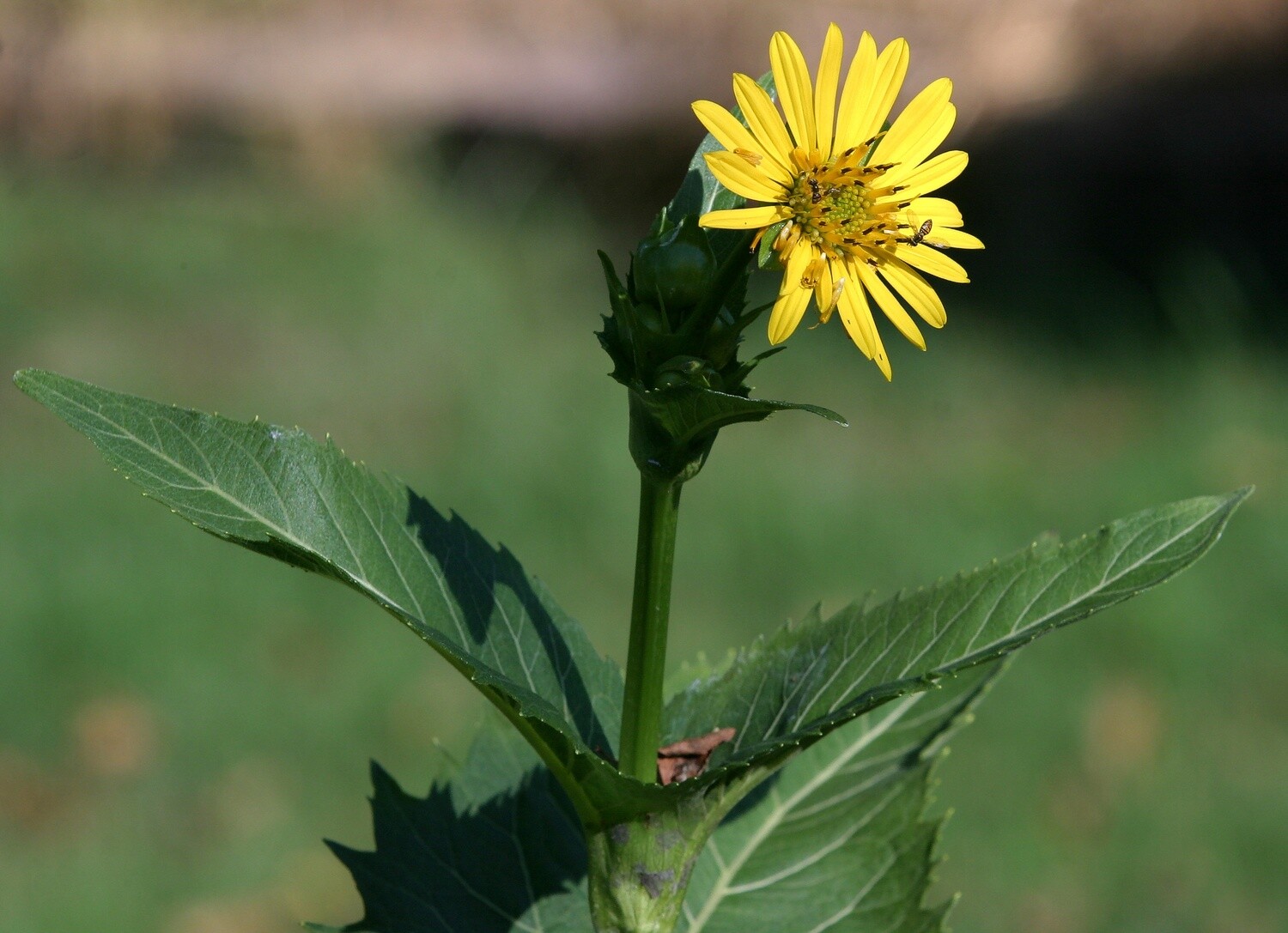Cup Plant - first year plants
Standing tall at around six feet (more in wetter soils, less in drier soils), Cup Plant's yellow blossoms can be seen starting in July when the butterflies visit them, and then later when the birds begin to feed on its seeds. Throughout the growing season, the water held in the leaf cups attract birds and other critters looking for a drink. Cup Plant establishes well in average garden soil or in heavier, wetter soils. It is easy to start from seed by fall planting outdoors, or, if planted in spring, a period of 60 days of moist, cold stratification is recommended prior to sowing.
A vigorous plant throughout its range, this species can be invasive when planted outside of its historic regions. Check the range map tab to see if this species is historically native to your state. If your state shows blue-green coloring instead of lime green, this species is best not planted there. Even within its range, it would not be a good choice for small landscapes as it could overwhelm smaller plants.
As the specific epithet "perfoliatum" suggests, each pair of leaves clasp the stem, making it look like the stem has pierced through them. The leaves themselves form a small basin that allows rain water to collect in tiny pools around the stem, hence the cup comparison. It has been suggested that this may be a primitive form of carnivorous behavior in the plant world. Certainly, one can see how this would set the stage for more specialization in that niche but, at least currently there has been no evidence of the plant gaining any nutritional benefit from the insects that may have drowned in there. It is more likely that this anatomical feature is a way of deterring potential flower predators from crawling up the stem in search of a meal. Indeed, for insects, these pools can form a considerable barrier against vertical movement.
